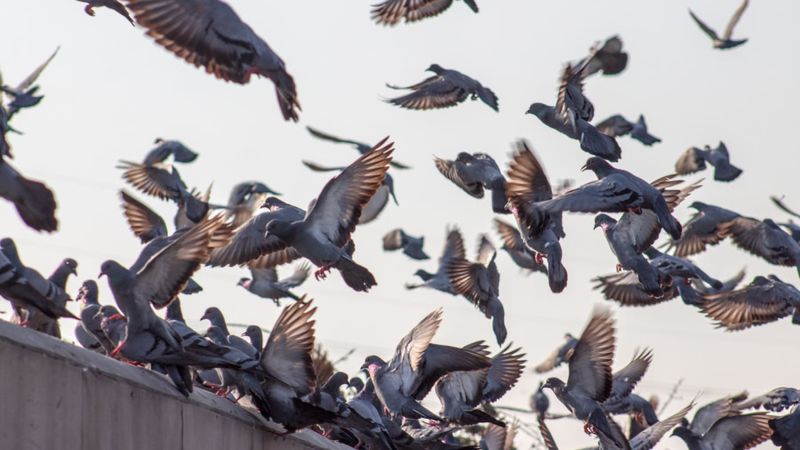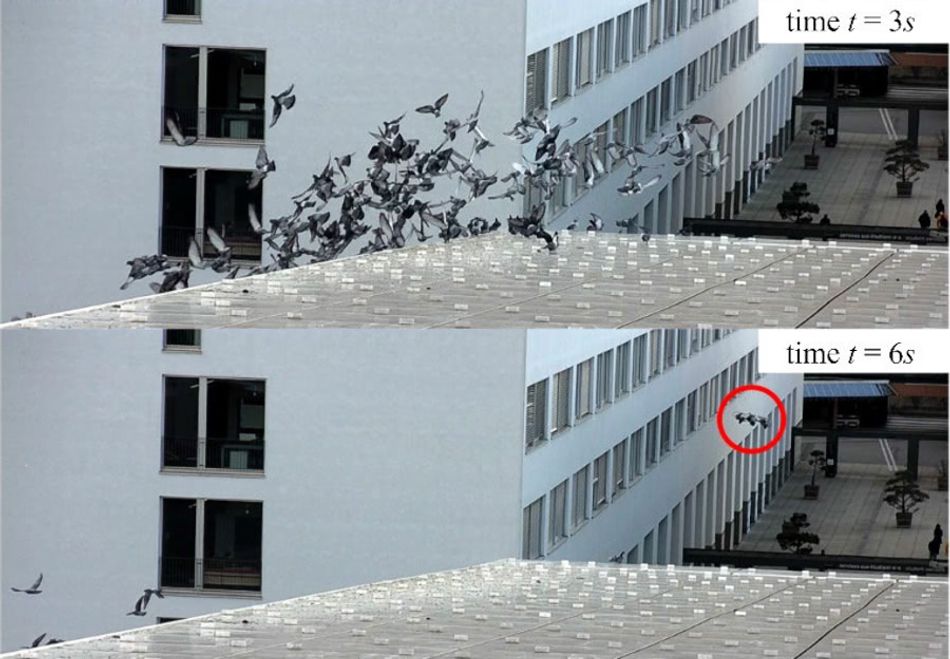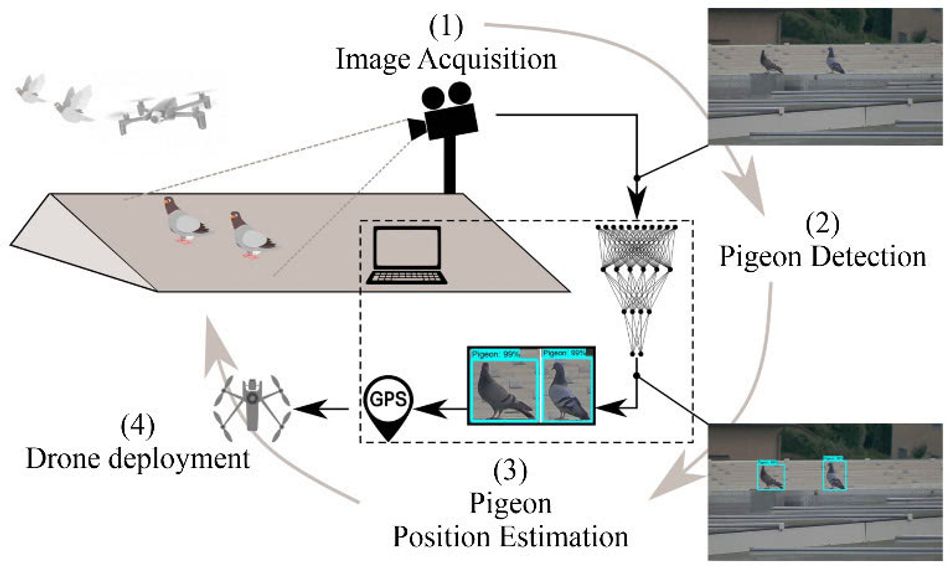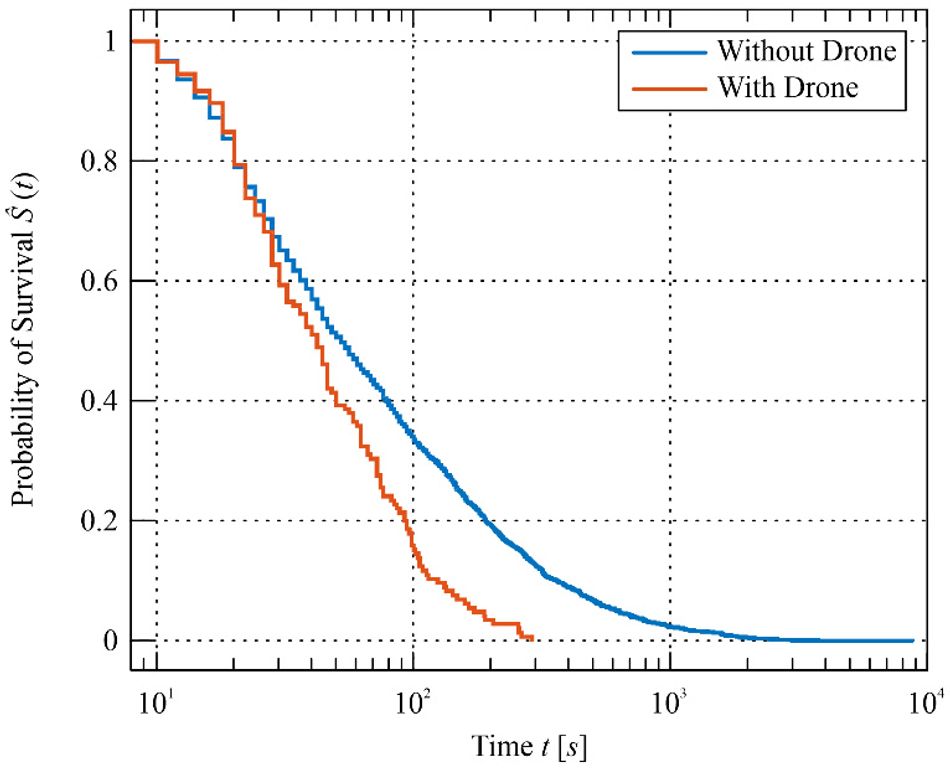Autonomous drones, triggered by a machine learning algorithm, could solve the urban feral pigeon problem
With research suggesting feral pigeons do as much as $1.1 billion in damage in the US alone, a project which pairs a commercial drone with machine learning to scare them away — without injury — could prove key to their control.

Feral pigeons can spread disease, consume crops, and damage buildings and vehicles — and they're scared of drones.
This article was discussed in our Next Byte podcast.
The full article will continue below.
Feral pigeons are believed to be responsible for $1.1 billion in damages in the United States alone, while serving as vectors of and reservoirs for diseases spread through their acidic and damaging waste. In rural settings they’re typically kept away from crops using noise-based bird scaring devices which emit loud reports at irregular intervals, but urban control is more challenging — especially if you’re trying to avoid actively harming the birds.
A team of scientists believe that machine learning may have the answer, by monitoring for pigeon flocks and automatically dispatching an automated uncrewed aerial drone to scare them away — quickly, quietly, safely, and with a cost considerably lower than outfitting a city’s buildings with deterrent systems like spikes and nets.
Watch the birdie
While research has been conducted before on the ability of drones to scare birds away from an area has been conducted in the past — and has served to support the founding of several commercial services who offer drone flights for this very purpose — it has involved human pilots, an expensive and time-consuming method for fixing the problem.
It’s an approach inspired by nature: Natural predation by raptor species is known to reduce pigeon numbers in a region well above the number actively killed, while falconers can provide a raptor-as-a-service platform where and when required — solving the problem, after a fashion, but at a high cost and with demand outstripping supply of trained birds and their handlers.
Fabrizio Schiano and colleagues aim to take the core concept behind both approaches and automate it, providing a machine learning system which handles both monitoring an area for pigeon activity and deploying a drone to act as a deterrent — flying to where the pigeons are found, hovering close enough to scare them away, then automatically returning to base without human intervention.
To simplify the approach, Schiano and his team turned to machine learning: A camera with pan, tilt, and zoom (PTZ) capability was deployed to monitor a building rooftop known to be popular along the local feral pigeon population. A minimized dataset of images based on the footage was used to fine-tune a version of the Faster R-CNN convolutional neural network in order to assign bounding boxes to pigeons — providing an automated means of quantifying the pigeon population in the monitored area.
Flight of the drones
Once the network had found the pigeons, the bounding boxes were converted into global navigation satellite system (GNSS) GPS coordinates — using a pre-set height and calculating pigeon locations based on knowledge of the camera’s position and the pan, tilt, and zoom data.
With coordinates in hand, the system then dispatches the drone — an off-the-shelf Parrot Anafi, which supports autonomous fly-and-return missions based on GPS coordinates and which has a low noise level so as not to disturb citizens in the area — to fly over the pigeon flock.
The results are impressive: With just a five to 15 second hover time, the drone successfully chased flocks away 55 times during a five-day experimental run — dramatically reducing the time the pigeons spent in the area compared to a 21-day information-gathering period where no drone was used, dropping the average from 8,848 seconds to just 290 seconds.
The system as it stands today isn’t fully autonomous, however: A human is kept in the loop in order to adhere to local laws on drone flights over populated areas, triggering the drone manually when advised to do so by the machine vision system. As a result, the detection-to-landing pipeline stands at an average 115.96 seconds for a full cycle — a figure which the team believes could be reduced by 21.75 seconds by removing the human from the loop.
Work in progress
Schiano and colleagues have other ideas for improving the system, too. The object detection system was noticed to suffer from false positives, in particular spotting metal objects on the roof and confusing them for pigeons while also failing to detect partially-occluded pigeons. Additional training is also required to operate in weather conditions causing degraded visuals, like fog or rain — though the team notes that inclement weather would prevent the drone from flying anyway.
A bigger issue is the long-term impact of the deterrent system. Pigeons are known to become habituated to a range of existing deterrent measures, and it remains to be seen whether they would begin to ignore the drone too — having figured out it poses no actual threat.
“To the best of our knowledge,” the researchers conclude, “this is the first drone-based system to deter pigeons fully autonomously. Our approach could reduce damage to buildings and decrease the transmission of diseases spread by pigeons.”
The team’s work has been published in the journal IEEE Access under open-access terms.
References
F. Schiano, D. Natter, D. Zambrano, D. Floreano: Autonomous Detection and Deterrence of Pigeons on Buildings by Drones, IEEE Access vol. 10. DOI 10.1109/ACCESS.2021.3137031.
D. Pimentel, L. Lach, R. Zuniga, D. Morrison: Environmental and economic costs of nonindigenous species in the United States, BioScience vol. 50, no. 1. DOI 10.1641/0006-3568(2000)050[0053:EAECON]2.3.CO;2.



